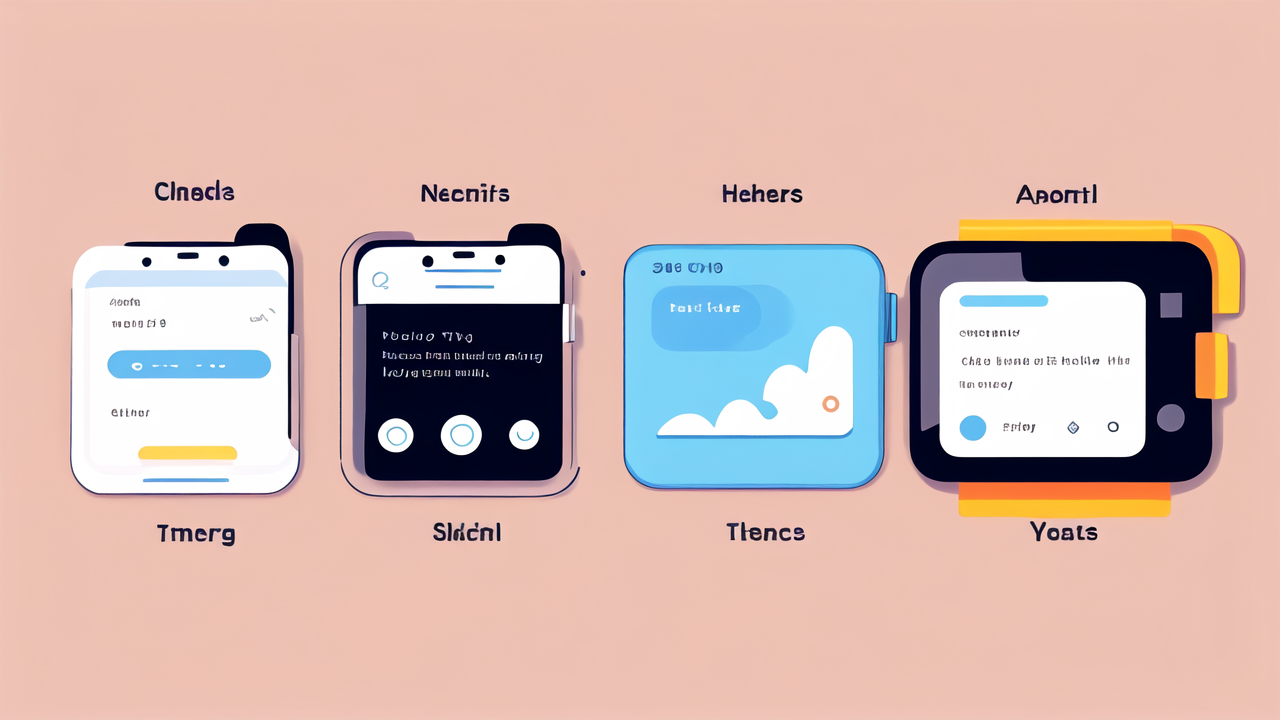Understanding the Differences: Smart Bands vs. Smart Watches
The Evolution of Wearable Technology
Wearable tech has come a long way. It started with simple step counters. Now, we have smart bands and watches. These devices can do much more than count steps. They track our health, show notifications, and even make calls. Smart bands came first. They were slim and focused on fitness. Smart watches followed, offering more features. They're like mini computers on your wrist. Both types have improved over time. They're now more accurate and have longer battery life. The line between bands and watches is blurring. Some bands now have screens and watch-like features. Watches are getting slimmer and more band-like. This evolution gives us more choices. But it can also make deciding harder.

Key Features of Smart Bands and Smart Watches
Smart bands and watches share some features. Both track steps, heart rate, and sleep. But they differ in other ways. Smart bands are usually simpler. They focus on fitness and health tracking. Most have smaller screens or no screen at all. They often have longer battery life. Some can last up to a week or more. Smart watches offer more features. They have larger screens and can run apps. Many can make calls and send texts. Some even have GPS and music storage. Watches often need charging every day or two. Both can show notifications from your phone. But watches usually show more detail. Bands are generally cheaper and more lightweight. Watches offer more functions but at a higher price and larger size.
User Preference: Bands or Watches?
Choosing between a band and a watch depends on personal needs. Fitness enthusiasts often prefer bands. They're lighter and don't get in the way during workouts. People who want more features lean towards watches. They like the larger screen and extra functions. Some users want a device that looks like a traditional watch. Others prefer the sleek look of a band. Battery life is a big factor for many. Those who hate daily charging might choose a band. People who use a lot of apps may prefer a watch. It really comes down to lifestyle and preferences. Some users even own both. They use a band for workouts and a watch for daily wear. There's no one-size-fits-all answer. The best choice is the one that fits your needs and style.
The Impact of Smart Wearables on Health and Wellness
Tracking Health Metrics with Smart Bands and Watches
Smart bands and watches are powerful health tools. They track various metrics throughout the day. Steps, heart rate, and sleep are common features. Many also monitor stress levels and blood oxygen. Some can even detect irregular heart rhythms. These devices give us a clearer picture of our health. They show trends over time, not just one-time readings. This data can be very useful. It can help us spot potential health issues early. Some people share this data with their doctors. It can provide insights that a single check-up might miss. However, it's important to note these aren't medical devices. They're tools to help us be more aware of our health. For serious concerns, always consult a healthcare professional.

The Role of Wearables in Fitness and Lifestyle
Wearables have changed how we approach fitness. They make it easy to set and track goals. Many people find them motivating. Seeing your progress can encourage you to move more. Smart bands and watches can track various workouts. They count reps, measure distance, and estimate calories burned. Some offer guided workouts right on your wrist. Beyond fitness, they impact our daily habits. They can remind us to stand up and move. Some track water intake or menstrual cycles. Many people use them to manage notifications. This can help reduce phone use and improve focus. Wearables are becoming lifestyle assistants. They help us balance activity, rest, and productivity.
How Smart Devices Can Encourage Healthy Habits
Smart wearables are great for building healthy habits. They use reminders and goals to keep us on track. Many have features that prompt regular movement. They might buzz if you've been sitting too long. Sleep tracking can help improve sleep habits. Seeing your sleep patterns can motivate better bedtime routines. Some devices have stress management features. They might suggest deep breathing exercises when stress is high. Many users find the social aspects motivating. You can share achievements or compete with friends. This adds a fun element to health goals. The key is consistency. Wearables make it easy to track habits daily. Over time, this can lead to lasting lifestyle changes. However, it's important to use these tools in a healthy way. The goal is to improve wellbeing, not become obsessed with numbers.
Selecting the Best Smart Band or Smart Watch for Your Lifestyle
Comfort and Convenience: A Look at Wearability
Comfort is crucial when choosing a wearable. You'll likely wear it all day, maybe even while sleeping. Smart bands are usually lighter and less noticeable. They're great for active people or those who prefer minimal accessories. Watches can be bulkier but offer more screen space. This makes them easier to read and interact with. Consider the material of the band. Some people prefer silicone for workouts. Others like leather or metal for a more classic look. Many devices offer interchangeable bands. This lets you switch styles for different occasions. Think about when and where you'll wear the device. If you plan to wear it 24/7, comfort is key. For occasional use, style might be more important. Remember, the most feature-packed device isn't always the best choice. It's the one you'll actually want to wear every day.

Connectivity and Compatibility: Pairing with Phones and Apps
Connectivity is a key factor in choosing a wearable. Most smart bands and watches work with smartphones. But some are limited to certain phone brands. Check if the device is compatible with your phone. Consider how it connects to other apps you use. Many wearables have their own apps for tracking and analysis. But they can often sync with popular fitness and health apps too. This lets you keep all your data in one place. Some watches can work independently of phones. They might have their own cellular connection. This is useful if you want to leave your phone behind sometimes. Wi-Fi connectivity can be helpful for faster data syncing. Bluetooth is standard for connecting to phones and headphones. If you use specific health or fitness apps, check for compatibility. The best device will fit seamlessly into your digital ecosystem.
Cost-Benefit Analysis: Smart Bands vs. Smart Watches
Price is often a deciding factor between bands and watches. Smart bands are generally cheaper. They offer core fitness tracking at a lower cost. Watches are pricier but come with more features. Consider what features you'll actually use. A cheaper band might be enough if you only need basic tracking. If you want a mini-computer on your wrist, a watch might be worth the extra cost. Think about long-term value too. A more expensive device might last longer or have better support. Some high-end watches get software updates for years. This can add new features over time. Cheaper bands might need replacing sooner. Factor in any subscription costs for advanced features. Some devices require paid plans for full functionality. Ultimately, the best value depends on your needs and budget. A $50 band could be perfect for one person. Another might get more value from a $300 watch. Choose based on the features you'll use most often.




Leave a comment
This site is protected by hCaptcha and the hCaptcha Privacy Policy and Terms of Service apply.